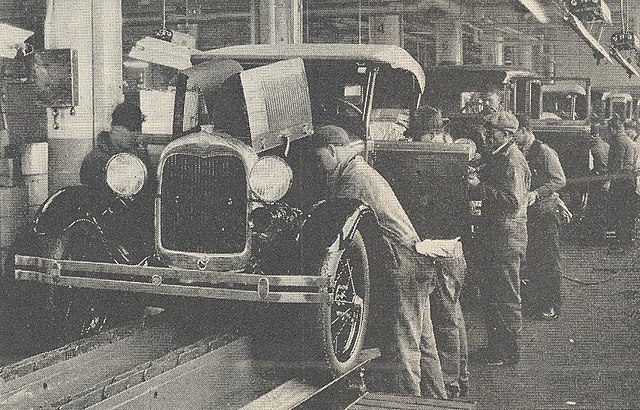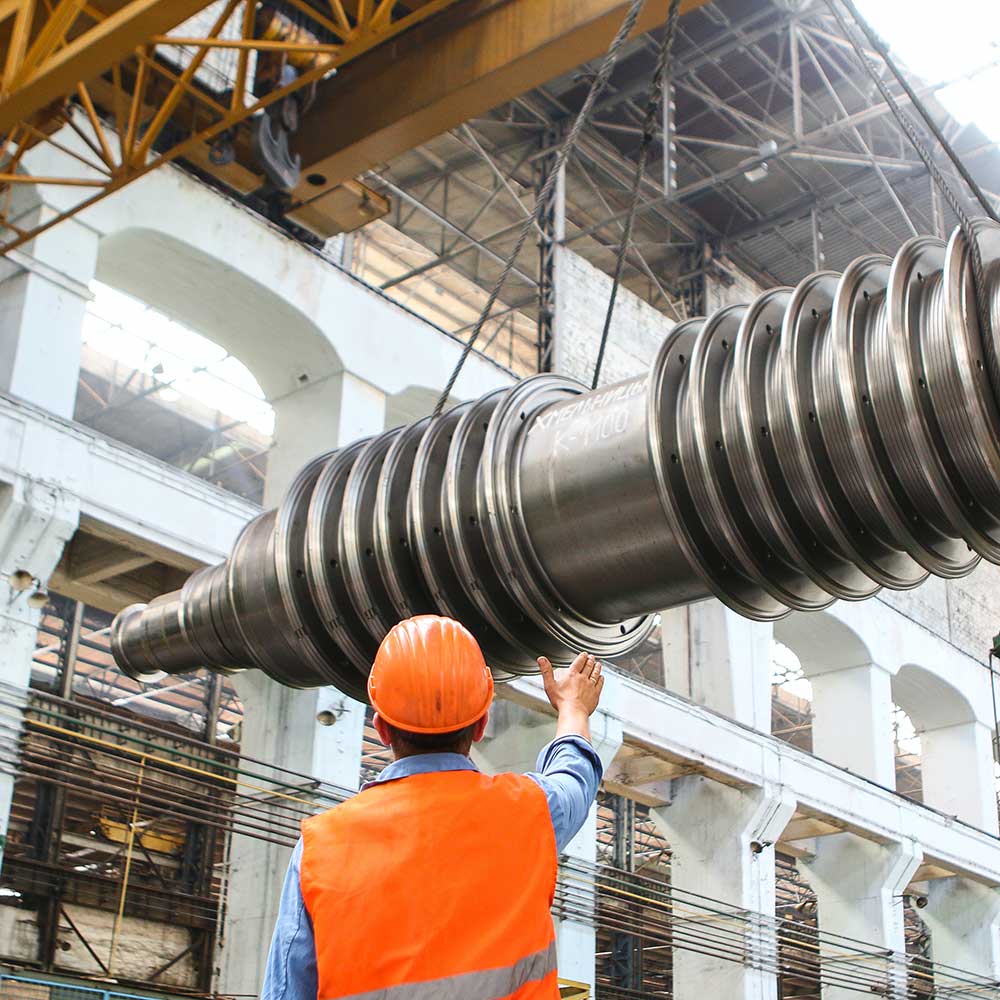- Author, Ron Ketterling
Cost reduction in manufacturing is a never-ending goal.
Over time, manufacturers have found methods to reduce costs even while improving products. The cost of making the Model T Ford went from $950 in 1908 to $300 in 1924 through mass production and assembly line efficiencies. In one lifetime, computers have evolved from multimillion-dollar machines that filled entire buildings to single handheld devices. How? By taking advantage of advancements in technology. Today, revolutionary ideas still can transform the costs of manufacturing.
An agile manufacturing business uses digital transformation to reduce operational costs while addressing rapidly changing markets.
COST REDUCTIONS IN TODAY’S MANUFACTURING
A lot has happened to disrupt and reshape the manufacturing industry since we wrote our popular article on Effective Ways to Reduce Manufacturing Costs, The cost reduction concepts haven’t changed; what has changed is the technology available to accomplish lower costs.
Effective Ways to Reduce Manufacturing Costs – Recap
1. Product Design – spend time in the planning stage to increase cost-effectiveness.
2. Lean Manufacturing – manage inventory and the workspace to eliminate waste such as overproduction, waiting time, and defects
3. Standardize Products – choose tools, raw materials, and processes that offer greater quality, flexibility, and responsiveness
4. Rationalize Product Line – focus on what is profitable
5. Simplify Supply Chain Management – build to order when possible
6. Measure Total Costs – understand and manage major cost drivers
7. Focus on Relationships – Strengthen vendor, partner, and customer relationships
Let’s look at how digital transformation can make cost reduction tactics more effective.
WHY DO MANUFACTURERS NEED DIGITAL TRANSFORMATION?
Digital transformation has been accelerated. A 2019 Forbes article on digital transformation trends for 2020 stated: “Companies that still aren’t investing heavily in analytics by 2020 probably won’t be in business in 2021. There is simply far too much valuable customer data to be collected, processed, and turned into insights for any company to remain competitive without making full use of modern analytics tools.”
While this is overstated, during the COVID-19 pandemic, operational inefficiencies were starkly visible. Manufacturers who had not adopted digital transformation strategies had difficulty reacting. Since then, manufacturing companies have faced other major challenges including supply chain disruptions, high inflation, labor shortages, and trade uncertainties.
At the same time, changing customer expectations and consumer habits have increased pressure on manufacturing companies to transform products and services. E-commerce is driving new opportunities and changing distribution patterns. Today, most customers expect to conduct all business digitally, wherever, and whenever, using any device. In fact, increased customer expectations are a primary reason for digital transformation.
Fortunately, the technology is available to help businesses increase operational efficiencies, be smarter about supply chain and materials planning, and do more with fewer people. However, digital transformation is needed to implement and take advantage of these technologies.
HOW DO MANUFACTURERS INITIATE DIGITAL TRANSFORMATION?
Digital transformation isn’t a one-step endeavor, but an ongoing journey. According to MIT Sloan Management Review, “Digital Transformation is better thought of as a continual adaptation to a constantly changing environment.” Businesses that foster a company culture that embraces digital transformation will greatly increase their chances of success.
What are the characteristics of digital transformation?
1. Growing resilience and agility
2. Adopting innovative technologies
3. Eliminating data silos
4. Increasing operational efficiencies
REQUIRES RESILIENCE AND AGILITY
We have clearly seen in recent years that crises, such as supply chain challenges and labor shortages, can strike anytime and anywhere. Businesses need to adapt to change to stay viable.
Business resilience and agility ensure that hardships do not slow a company down. Rather than stagnate, they embrace a strategic, adaptable, efficient, and collaborative approach. An agile organization not only adapts when changes arise, but also searches for, finds, and pursues opportunities for growth.
Agile businesses embrace modern technology and tools and recognize their role in innovating for an unknown future, while fostering a culture of comfortable technology usage.
As McKinsey & Company reported, digital adoption has taken off at both the organizational and industry levels. This is not surprising considering the pandemic forced businesses to quickly accommodate remote employees. As a result, the plans businesses had for digital transformation were supercharged as they needed to adopt technology such as cloud software and online project management.
In the wake of the “Great Resignation,” traditional companies had to compete for qualified talent from a limited pool. But a company that is agile focuses on keeping its existing employees. The best way to keep employees is to reevaluate the work environment. Examples of incentives to offer employees are a diverse workplace, flexible workspaces, and a healthy work-life balance. An agile business is willing—and able—to modify its work environment, thus allowing it to meet the demands of job seekers and employees pursuing fulfilling difference-making careers.
ADOPTING NEW TECHNOLOGIES
Digital transformation is being prepared to plan for and adopt new, proven technology to cover the back office through to operations. In today’s environment of rapid change, businesses need to use the latest technologies to make better, faster decisions and automate workflows. But it’s not just about investing in the newest technology. Instead, it’s about investing in the right technology.
In the manufacturing industry, digital transformation means implementing Industry 4.0, Industry of Things (IoT), blockchain, and others. With all the buzzwords and concepts in manufacturing, it is worth defining how all these concepts relate to each other.
What is Industry 4.0?
Industry 4.0 is the fourth wave of the industrial revolution in the United States. First was Industry 1.0, ushered in by mechanization, while 2.0 brought us mass production. Industry 3.0 took over when computerization entered manufacturing. In Industry 4.0, computers and automation come together in completely new ways, using robotics, machine learning, and manufacturing software to control manufacturing through autonomous machine decisions.
According to Forbes, the following must be in order for a manufacturer to be considered 4.0:
- Interoperability: Machines, devices, sensors, and people must all connect and communicate with each other.
- Information transparency: Computer systems will create a virtual copy of the physical world using sensor data to contextualize information.
- Technical assistance: Machines must be able to support humans in making decisions and solving problems and have the capability to assist or replace people in tasks that are too difficult or potentially unsafe.
- Decentralized decision-making: A cyber-physical system must have the ability to make simple decisions on its own to become as autonomous as possible.
It’s designed to connect embedded system production technology with smart production processes. This proves transformative to manufacturing especially, allowing businesses more clarity and understanding of processes, products, and even customer usage and behavior.
With Industry 4.0 systems in place, organizations can collect real-time information across their entire supply chain from start to finish. Machines rapidly process and analyze the data and use the results to improve operations, designs, and even the products themselves through virtually instantaneous feedback.
Companies that have moved to a digital-first mentality will be more prepared for the next industrial revolution.
Industry 4.0 Technologies Defined
While there are a variety of technologies available to be used across the organization, manufacturing operations have a few worth discussing in depth:
1. Cloud Computing
2. Artificial Intelligence/Machine Learning
3. Internet of Things
4. 5G
5. Blockchain
6. Digitization
- Cloud computing– moving software systems and data to cloud-based servers.
- This option combines the infrastructure cost allowing companies to essentially share the cost. Companies can also benefit by using third-party services that offer cloud computing. Cloud computing allows your organization to scale quickly to meet the challenges of business change.
- Artificial Intelligence (AI) and Machine Learning (ML) – algorithms that learn based on trends and behaviors and react without the need for human interaction.
- Modern cloud-based ERP solutions now use AI and ML capabilities in their reporting, dashboards, and data analysis tools to help them succeed in this digital economy. Risk analysis can now be performed by AI, producing real-time business predictions and forecasts based on organized data and freeing up employees for other tasks.
- Internet of Things (IoT) – interconnecting and creating intelligence from all the devices around us.
- In industrial facilities, the IoT concept is implemented through mobile apps, digital cameras, digital scanners, and sensors. This data is stored, reported, or processed as needed, and the system reacts accordingly.
- 5G connectivity – wireless connectivity with speeds of up to 10 Gbps.
- This enables the upload and download speeds needed for IoT systems, big data, and machine learning.
- Blockchain technology – a secure data transfer method with applications beyond the banking and finance world.
- It is now being used in supply chain transactions to keep information secure.
- Digitization – converting handwritten notes, documents, and images into a digital equivalent that can be received, processed and stored by a computer.
ELIMINATES DATA SILOS
As you can see, digital transformation technologies are about collecting and processing vast amounts of data. But the data is not useful if siloed and unavailable for decision-making. Digital transformation also requires making real-time data available throughout the organization. This, in turn, increases communication and connection between various departments.
Data mining is one of the benefits of IoT. Each step-in production is tracked and studied. The result is a set of “big data.” The sheer volume of data is staggering, but it offers a world of opportunities for businesses to better manage the supply chain, enhance daily operations and improve customer relationships.
As companies move into a data-driven environment, they need a system to manage data and processes. Implementing cloud-based ERP solutions brings people, technology, and processes together to become a connected business through digital technology and a digital platform. Cloud ERP software is adaptable, intuitive, collaborative, automated, and insightful, providing users with a sole source of truth in real-time, accessible any time, from anywhere.
INCREASES OPERATIONAL EFFICIENCIES
Making use of technologies across all operations increases’ operational efficiencies. It allows the organization to react quickly to changing environments and change the way a product is packaged, shipped, or made based on collected data. Automating business processes helps to minimize errors and reduce costs. Digital transformation requires changing how the business thinks about customers, products, and processes. It requires an openness to evaluate the data and the flexibility to make changes based on the data.
Digital transformation uses technology such as IoT to gain the information needed to customize product lines, tailor marketing, speed up product enhancements and offer more effective customer service.
The technology offers cost savings and productivity enhancements because of automatic alerts to system and machine errors. Manufacturers and distributors are experiencing reduced machinery downtime, increased quality, less waste, and greater visibility through improved analytics.
7 Ways to reduce manufacturing costs and how digital transformation impacts them:
1. Product Design: Increased availability of product usage data allows manufacturers to improve product quality and design.
2. Lean Manufacturing: Big data enables manufacturers to perform predictive, rather than preventative maintenance. This reduces machine downtime and increases the ROI of investments.
- Collect digital data from a production line and use it to find problems and inefficiencies in addition to recommending remedial actions.
- Use the timely and accurate information for critical orders, material delivery delays, equipment failures, and inventory levels to analyze and drive optimization in production schedules.
- The information is useful to demand forecasts and delivery times, leading to benefits in stock minimization, just-in-time production, and waste reduction.
3. Standardize Products: In fact, using IoT, manufacturers can reach “mass customization.” It opens opportunities for new service offerings without adding substantial overhead.
4. Rationalize Product Line: Better data about product costs improves the ability to quickly understand profitability and optimize pricing.
5. Simplify Supply Chain Management: Seamless information flow for important events across the supply chain between manufacturers, distributors, and customers makes it easier to react.
6. Measure Total Costs: Big data opens the door to even more opportunities to analyze costs throughout the production cycle and the organization.
7. Focus on Relationships: Technology enables easier communication of important data to improve vendor, partner, and customer relationships.
Bottom line:
Digital transformation in manufacturing significantly improves worker efficiency. When you introduce automated data collection to your business processes, you instantly free up time for your employees to work on other projects. Additionally, automated data collection results in fewer errors and more efficient fulfillment of orders.
While there is no one way to implement a digital transformation strategy, according to IBM, most successful digital transformations follow two principles:
1. Start with the ideal customer experience and work backward.
2. Transform operations across the entire organization.
If you are ready to begin your digital transformation, we can help.









